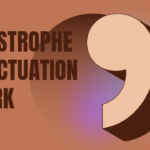Introduction
Punctuation marks are essential components of any written language.
They are used to convey meaning, tone, and emphasis in a sentence. Punctuation marks are like signposts that help the reader navigate through the text and understand its meaning better.
Proper punctuation is crucial for effective communication, as it can convey important information about the way a sentence is structured. Of all the punctuation marks, semicolons are one of the most misunderstood.
Many people don’t know how to use them correctly or think they should avoid them altogether. However, when used properly, semicolons can add depth and complexity to your writing.
The Importance of Punctuation Marks in Writing
Punctuation marks serve several crucial purposes in writing. Firstly, they help us express ourselves more clearly by separating different parts of a sentence and making it easier to read and understand.
Secondly, punctuation marks allow us to convey our tone and intent more effectively by indicating pauses or breaks in speech patterns. Punctuation also helps us eliminate ambiguities that can lead to misinterpretation.
If we didn’t have punctuation in writing at all; it would be difficult for readers to understand the intended meaning of sentences entirely.
Proper use of commas can drastically change one’s thoughts on a particular matter; same goes with other important grammar rules like semicolons that separate two separate clauses or series with complex items.
The Semicolon’s Misunderstood Reputation
The semicolon is often misunderstood because many people don’t know its correct usage or think it’s an outdated punctuation mark not worth learning about. However, this couldn’t be further from the truth! Semicolons play an essential role when you need more than just a comma but less than a full stop (period).
Semicolons can be used to link two independent clauses together without using a conjunction such as “and” or “but.” They can also be used to separate items in a list that already contain commas or to clarify complex lists or series.
The semicolon has the potential to make your writing more concise and effective, so it’s well worth mastering this misunderstood punctuation mark.
What is a Semicolon?
The semicolon (;) is a punctuation mark that is often misunderstood and misused in writing.
It looks like a period stacked on top of a comma, and its main function is to separate clauses within a sentence.
Unlike the comma, which indicates a shorter pause in the sentence, or the period, which indicates the end of a sentence and complete thought, the semicolon creates a medium pause between two related ideas.
The semicolon can be used to connect two independent clauses that are closely related but do not have coordinating conjunctions such as “and,” “but,” or “or.”
For example:
“I love reading books; my favorite author is Jane Austen.”
In this example, both ideas are complete sentences, but they are closely related and flow better when connected by a semicolon rather than separated by just a period.
The semicolon helps show that these two statements share an idea or relationship.
Rules for Using Semicolons
Semicolons are often used to separate clauses within a sentence. They are an excellent tool for writers who want to break up lengthy sentences or avoid run-on sentences that can be difficult for readers to follow.
However, it is important to know the rules for using semicolons effectively in order to avoid common mistakes.
Rule 1: Separating Two Independent Clauses Without a Conjunction
The first rule of semicolon usage involves separating two independent clauses without using a conjunction like “and,” “but,” or “or.”
Typically, independent clauses can stand alone as complete sentences.
However, when they are combined within the same sentence, proper punctuation is necessary to ensure clarity and readability.
For example:
“She loves reading books; he prefers watching movies.”
Both phrases before and after the semicolon can function as complete sentences on their own but have a logical connection.
Therefore, they are joined together with a semicolon rather than separated by a period or connected with a conjunction.
Rule 2: Separating Items in a List That Already Contain Commas
In certain cases where lists contain items that themselves already contain commas, using semicolons instead of commas helps create clarity.
The comma indicates there is another item in the list while the semicolon separates between groups of items that each have their own commas within them already.
For instance:
“On her trip around Europe, she visited Italy with its beautiful architecture;
Japan, known for its unique culture; and Brazil, famous for its vibrant music scene.”
Here we see how the use of semicolons helps distinguish between different items in our list that could be mistaken as being grouped together if we used only commas.
Examples of Semicolon Usage
Example 1: Separating independent clauses – “She loves to read; he loves to write.”
One of the most common uses of semicolons is for separating two independent clauses.
These are two complete sentences that can stand alone but are closely related in meaning. In this example, we have two separate thoughts that can exist independently, but they also relate to each other and flow together well.
The use of a semicolon here creates a strong connection between the two clauses and adds a sense of cohesion and flow to the sentence. It also eliminates the need for conjunctions like “and” or “but,” which can sometimes disrupt the rhythm of a sentence or make it feel awkward.
When using semicolons in this way, it’s important to make sure that both clauses are balanced in length and complexity.
If one clause is significantly longer or more complex than the other, it may be better to use a period instead and create two separate sentences.
Example 2: Separating items in a list – “The countries I want to visit are Italy, with its beautiful architecture; Japan, with its unique culture; and Brazil, with its vibrant music scene.”
Another useful way to use semicolons is for separating items within a list when those items themselves contain commas. In this example sentence, we have three different countries listed as things the writer wants to visit.
Each country includes an additional description that itself contains commas. By using semicolons instead of commas between each item on the list, we create clarity and eliminate any confusion about where one item ends and another begins.
This usage also creates an elegant rhythm within the sentence by allowing each item on the list to be given equal weight without overwhelming or cluttering up the sentence. It’s worth noting that not every list will require semicolons to separate items.
In general, semicolons should be used sparingly and only when necessary for clarity or style purposes. If a list contains only short, simple items, commas may be perfectly adequate to set them apart from each other.
Example 3: Clarifying complex lists – “The ingredients for the recipe include flour, sugar, and butter; eggs, milk, and vanilla extract; and baking powder, salt, and cinnamon.”
Semicolons can also be useful for clarifying complex lists or series that contain multiple levels of information. In this example sentence, we have a list of ingredients for a recipe.
Each ingredient is made up of multiple parts – the main item (flour, eggs, etc.) as well as additional details (sugar vs. brown sugar).
By using semicolons to separate each item on the list rather than just commas within the items themselves or between each item on the list overall we create clear separation between each individual component of the full list.
This creates clarity for the reader by making it clear where one ingredient ends and another begins.
When using semicolons in this way with complex lists or series be sure to take extra care that all components are clearly separated into their own parts without any overlap between them.
Overlap can lead to confusion about which part belongs with which item on the list resulting in errors or misinterpretations in meaning.
Common Mistakes When Using Semicolons
Overusing semicolons instead of using other punctuation marks like commas or periods
One common mistake when using semicolons is overusing them instead of using other punctuation marks like commas or periods.
While semicolons have a unique function in separating clauses, it is important to understand when they are appropriate to use.
Semicolons should not be used in place of commas or periods just because the writer thinks they make the sentence look more sophisticated.
Using too many semicolons can make the writing seem overwrought and difficult to read.
It can also confuse readers who may not understand why a semicolon was used instead of a comma or period.
Therefore, it’s important to use semicolons judiciously and only when they serve a clear purpose in the sentence structure.
Conclusion
Understanding how to properly use the semicolon is an essential skill for any writer who wants to master punctuation and convey their ideas clearly.
The semicolon is a powerful tool for connecting related ideas and maintaining the flow of thought in complex sentences.
However, it must be used carefully and deliberately, with an understanding of its function within the larger context of sentence structure.
By following these rules for using semicolons and avoiding common mistakes, writers can improve their writing style and clarity while also showcasing their mastery over advanced punctuation concepts.
So go ahead and give those pesky semicolons another chance – with practice, you’ll soon find that they’re not so scary after all!





3 thoughts on “Semicolon Punctuation Marks”